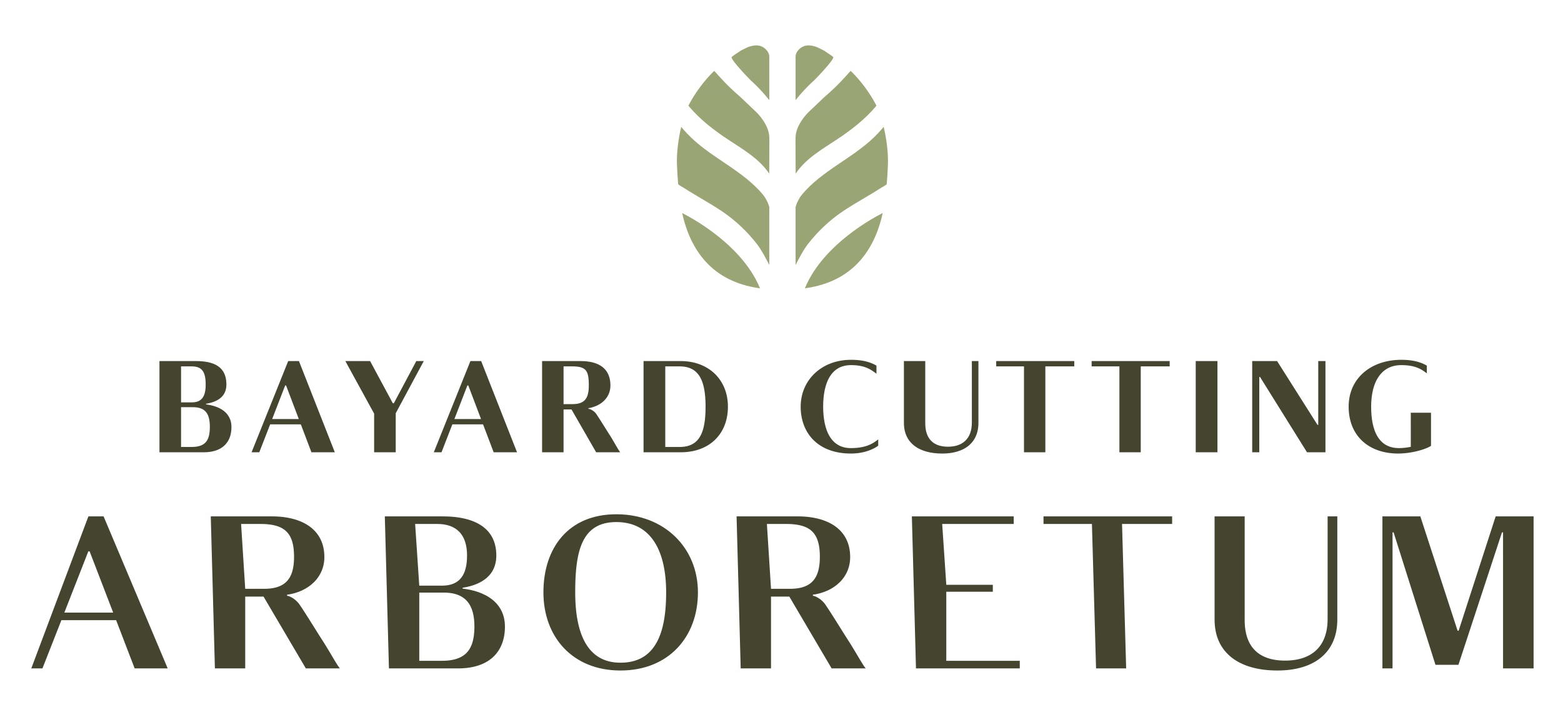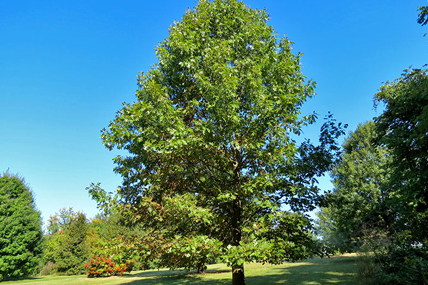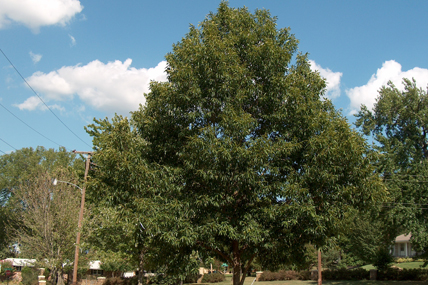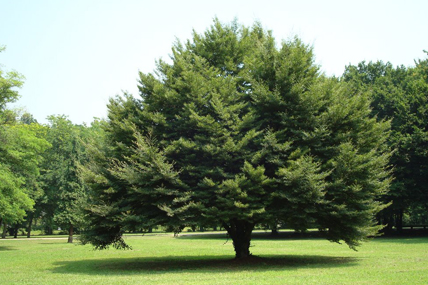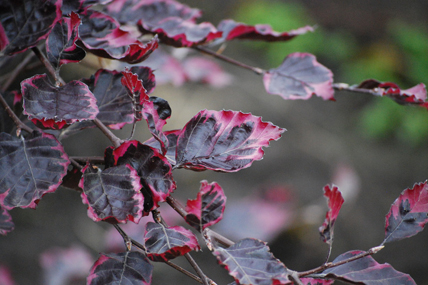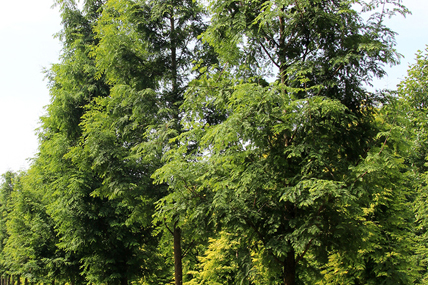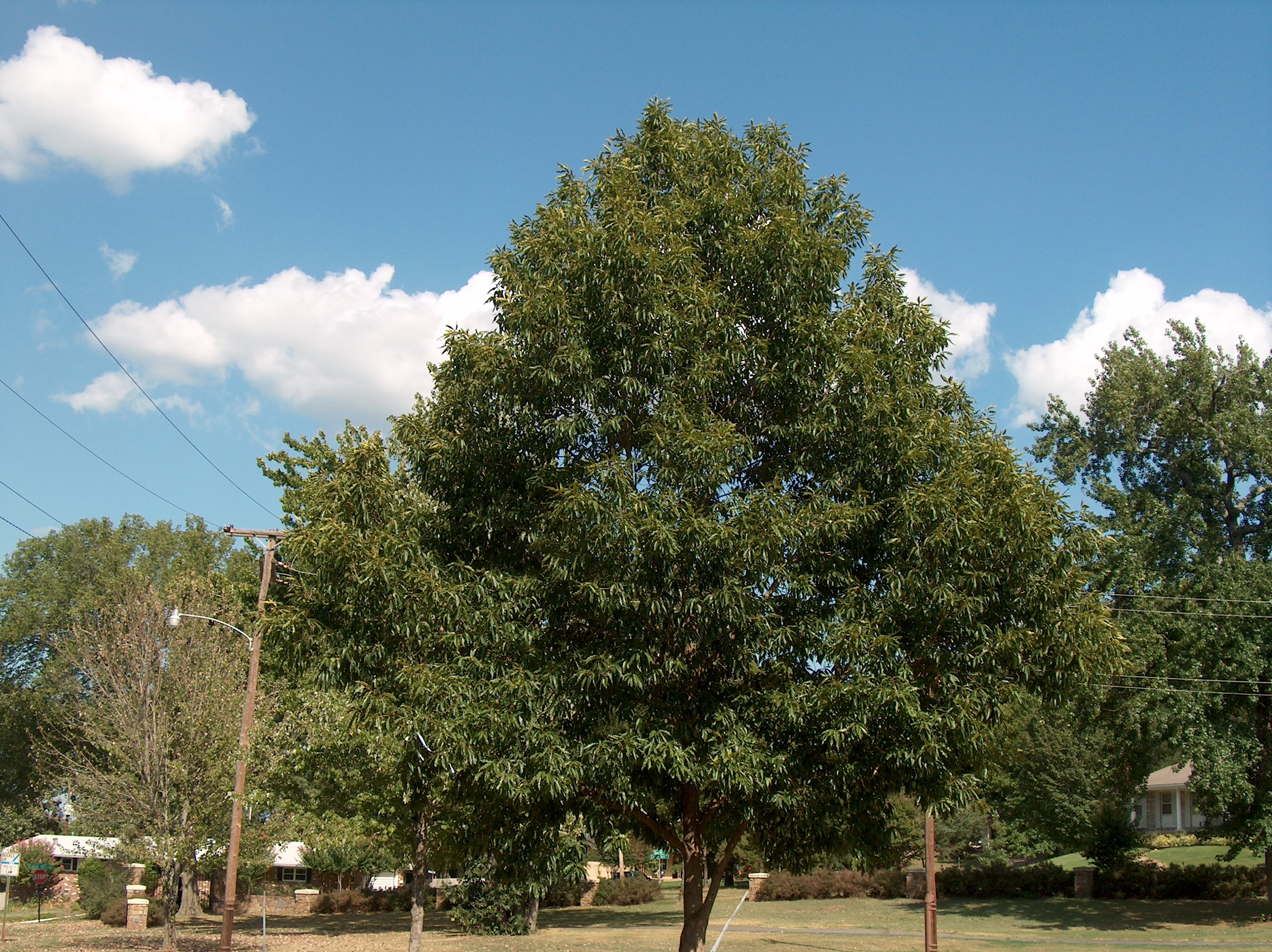TRICOLOR EUROPEAN BEECH
Fagus sylvatica 'Tricolor'

COLLECTION
Oak Park
FAMILY
Fagaceae
PLANT TYPE
Tree, Deciduous
ZONE
4-7
CULTURE
The ‘Tricolor’ European Beech prefers well-drained, slightly acidic soil in part sun with regular watering until established. It will not stand wet or compacted soils.
NOTEWORTHY CHARACTERISTICS
Purple foliage with pinkish-white and rose border. Turns copper in the fall.
PROBLEMS
Not recommended for hot or dry locations as leaves will scorch.
GARDEN USES
This beech is used for shade; it is a colorful specimen accent among evergreens.
OAK PARK COLLECTION
